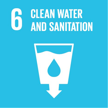About this project
Water hyacinth (Eichhornia crassipes) is an invasive aquatic plant that poses significant challenges to water bodies worldwide. Its rapid growth and ability to form dense mats on the water surface can lead to detrimental effects on aquatic ecosystems, including reduced biodiversity, impaired water quality, and hindered navigation. However, this project aims to transform this environmental problem into an opportunity by exploring innovative ways to utilize water hyacinth for sustainable water management and environmental restoration.
The primary objective of the Natura project is to develop a comprehensive strategy for the effective control and utilization of water hyacinth in order to mitigate its negative impacts while harnessing its potential benefits. The project will focus on three main aspects: control and removal techniques, resource recovery, and ecosystem restoration.
Firstly, various control methods will be investigated to manage the growth and spread of water hyacinth. This will involve studying the effectiveness of mechanical removal techniques such as harvesting and dredging, as well as biological control methods using natural enemies or herbivorous animals that feed on the plant. The aim is to identify the most efficient and environmentally friendly approach for controlling water hyacinth populations.
Secondly, resource recovery from harvested water hyacinth biomass will be explored. The plant has significant potential as a renewable resource due to its high cellulose content, making it suitable for bioenergy production through anaerobic digestion or thermal conversion processes. Additionally, the extraction of valuable compounds such as starches, fibers, or bioactive substances from water hyacinth could provide opportunities for various industrial applications.
Lastly, ecosystem restoration efforts will be undertaken by utilizing water hyacinth's phytoremediation capabilities. The plant has shown promising results in removing pollutants from contaminated waters due to its ability to absorb heavy metals and nutrients. By strategically placing water hyacinths in polluted areas or wastewater treatment systems, the project aims to improve water quality and restore ecosystems affected by pollution.
The Natura project will involve extensive field surveys, laboratory experiments, and pilot-scale demonstrations to evaluate the effectiveness of different techniques and assess their economic viability. Additionally, environmental impact assessments will be conducted to ensure that the proposed strategies do not introduce new ecological risks.
Goals and Objectives
The goals and objectives of the Natura project include:
1. Environmental conservation: The primary goal of this project is to control or eradicate the invasive plant species to protect the natural ecosystem. Water hyacinths can cause significant ecological damage by depleting oxygen levels in water bodies, blocking sunlight, and disrupting natural habitats, hence, leading to massive die-offs of fishes and consequently leading to low fish harvest. Through this project, we wish to remove water hyacinth which will help to restore balance to the ecosystem and consequently lead to an increase in fish productivity.
2. Water quality improvement: Water hyacinths negatively impact water quality by releasing toxins and pollutants into the water. This project aims to manage these plants to improve the overall water quality for human consumption, irrigation, or aquatic life.
3. Socio-economic benefits: The Natura project aims to create employment opportunities for local individuals through harvesting and processing of the plant material into household handicrafts. Additionally, through this project, we aim to develop sustainable uses for water hyacinths, such as converting them into biofuels or organic fertilizers.
The intended beneficiaries for this project are local individuals, fish farmers and fish consumers.
After the end of the project, it's impact will be sustained as local individuals will largely engage into harvesting and processing these plants into marketable handicrafts in search for money.
There is a high potential for replication or scaling up of this project due to its less complexity and the high abundance of water hyacinth in various water bodies such as lakes, rivers and ponds.
Expected result
The expected results of the Natura project include:
1. Increase in fish productivity: The implementation of the Natura project will see an increase in fish productivity as the harvesting of water hyacinth will significantly improve natural breeding ground for fishes and decrease massive die-offs.
2. Improved water quality: Water hyacinth negatively impact water quality by depleting oxygen levels and blocking sunlight. The implementation of this project would result in improved water quality as the invasive plant is controlled or removed.
3. Restoration of aquatic ecosystems: Water hyacinth disrupts native plant and animal species by outcompeting them for resources. By managing its growth, the project will restore balance to aquatic ecosystems and promote biodiversity.
4. Increased availability of water resources: Water hyacinth impede the flow of water in rivers, lakes, and reservoirs, reducing their capacity for storage and supply. This project will enhance the availability of water resources by minimizing this obstruction.
5. Economic benefits: This project will help to curb unemployment by creating employment to local individuals.
6. Enhanced recreational activities: Water bodies affected by excessive growth of water hyacinth limits recreational activities like boating, fishing, or swimming. By managing its presence, the Natura project will improve opportunities for recreation and tourism.
7. Community engagement and awareness: Water hyacinth projects often involve community participation through education programs, workshops, or volunteer efforts. The Natura project will raise awareness about the impacts of invasive species and foster community involvement in their management.
Sustainable Development Goals
Partners

About me / organisation
Sama Lesly Tankfu
Sama Lesly Tankfu is a creative thinker, an advocate for change, a tech-head and an innovative problem solver. He sought to solve problems that impact our environment positively. He has participated in several initiatives and programs that gears towards reforming our society and making our environment a better place. In 2020, he participated in the "keep Bamenda clean" campaign organized by the Bamenda city council where we picked up hips of waste causing pollution in the town.
In 2022, he emerged among the top 100 students for the prototype for humanity award in Dubai, National finalist at the University Startup World Cup (Denmark), National finalist at the Entrepreneurship World Cup (Cameroon), Microsoft for startups beneficiary, MIT Micro grant beneficiary and the Top 10 youths leading nature conservation initiatives in my region.
He has served as a member of the National Conservation Initiative- Cameroon (NCIC) where he commited to foster NCIC's goal of protecting the planet by developing and coordinating innovative campaigns that aims to educate and engage people on how to mitigate climate and environmental injustice which in turn produce huge impacts and measurable outcomes in our environment.
Through DRAUFSICHT’s Eco Journalism and other environmental-centered projects, he has over the past few years consolidated his skills, effort and expertise to achieve some of the Science-Based Targets for Nature.

